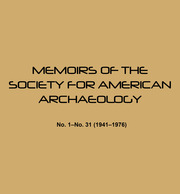Article contents
Hypotheses on Inner Asian Pastoral Nomadism and its Culture Area
Published online by Cambridge University Press: 27 June 2018
Extract
Considering the amount of attention that has been given to pastoral nomadism in studies of Asiatic cultures and their histories, one would expect that students of this subject would have reached agreement on the fundamentals. But on the contrary, expert views show a surprising amount of difference on important points. Discussions of pastoral nomadism often fail to coincide as to the nature of pastoral nomadism (i.e., what features are basic and essential), as-to its relationship with other types of culture, and as to its antiquity. These problems are increasingly acute when dealing with the question of whether or not a pastoral nomad culture area exists or has ever existed. Recent considerations of the subject include Bacon (1946, p. 123), Kroeber (1947, pp. 323-4), and Naroll (1950, p. 184). Kroeber raises the question of the validity of pastoral nomadism as a complete culture; Naroll side-steps the problem by referring to a “Steppe Area.”
- Type
- Research Article
- Information
- Copyright
- Copyright © Society for American Archaeology 1953
- 4
- Cited by


